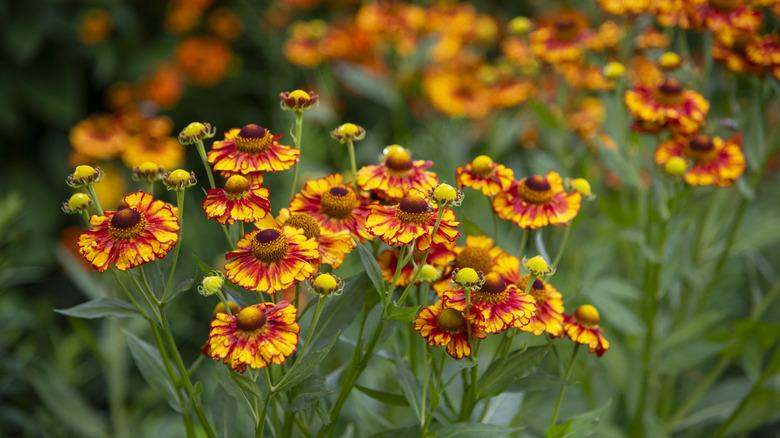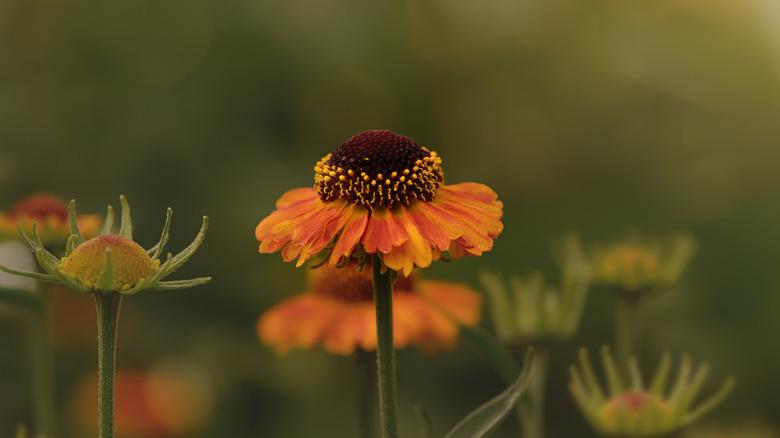The Easy-To-Grow Flower That Will Last In Your Garden For Years
Are you looking for a unique way to add beautiful color to your garden? Perhaps it's time to consider taking a chance on Helen's flower (Helenium autumnale), an underrated yet striking plant from the aster family, which is both easy to grow and impressively long-lasting. Who knows, it might just become the flower all your neighbors will be asking about this fall.
Helen's flower grows two to three feet tall and sports a range of autumnal colors, such as yellow, gold, and orange, with daisy-like blooms. Their copper-toned petals appear in mid- to late summer, making them the perfect follow-up for when summer-blooming flowers are beginning to fade and drop. Additionally, although this can vary depending on the species, their relative height makes them a great help in figuring out how best to landscape your flower beds. This is because they are visible above shorter blooms and do well in filling out empty spaces with their 2- to 3-foot-wide spread.
Benefits of planting Helen's flower in your garden
But the benefits of this lesser-known tall-blooming flower don't stop there. Helen's flower is a perennial, meaning that it can return on its own multiple years in a row. This flower, specifically, can reappear up to four to five years and, beyond that, its ability to re-seed in the right conditions means you could benefit from its lovely aesthetic for even longer. Beware, though, while Helen's flower is not classed as an invasive garden plant, its ability to self-seed means that it can easily germinate to other areas of the garden if not kept in check. This can be done by removing blooms before they go to seed, pulling up seedlings, or spreading mulch over areas where you don't want the flowers to grow.
Helen's flower also makes for a great addition to any garden due to its adaptability to different soil types and the fact that it does not tend to fall victim to disease or pests. It grows best in zones 3 to 8 as its tough nature is able to withstand the winters in these areas. It also serves as a great food source for pollinators, attracting the broadest range than any other flower in The University of Nebraska's research. Helpfully, unwanted garden disrupters such as deer and rabbits are not enticed by Helen's flower, meaning they will not be attracted to your garden by these blooms.
Tips for growing Helen's flower at home
Helen's flower is best planted outside in spring to give it time to flourish before blooming in early autumn. Though they are native to wetlands, these flowers grow very happily in normal garden environments, as long as they are kept well-watered due to the fact that they are not particularly drought-resistant and can wither if left without sufficient moisture. Additionally, they require good drainage, and it is a good idea to plant them away from windy areas as their tall stems may be damaged by strong gusts.
Pruning and deadheading at the right time can also be key to making sure your Helen's flower blooms abundantly in the fall. Cutting the plant back in mid-June can encourage better growth and more flowers later in the year. Additionally, once your Helen's flower has bloomed, removing blooms as they fade can stimulate the plant and give it a chance to produce even more blossoms.


